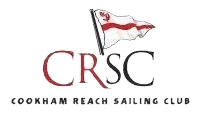For Race Officers and Members
The river can be dangerous. These guidelines should be followed at all times.
RACING WILL NOT TAKE PLACE UNLESS THERE IS A FULL DUTY
TEAM COMPRISING THE RACE OFFICER PLUS TWO ASSISTANTS
- If racing takes place, the helm takes responsibility for the safety of the crew and the boat, making sure they are all wearing life jackets.
- The OD has the sole responsibility for deciding whether racing shall take place. The OD should consider the weather, current, the availability of experienced assistants and the status of the Environment Agency’s River Conditions Warning Boards.
- The OD shall ensure the Safety Boat is properly equipped. This will include anchor, heaving line, painter, paddles and sufficient fuel. The OD should check also that the chosen helm(s) for the Safety Boat has/have received the appropriate training and familiarisation.
- The Safety Boat crew shall wear protective clothing and buoyancy aids. The engine kill cord must be used, attached to the helm at all times.
- The Safety Boat shall always be ready for use, and not be used for pleasure trips. Passengers not engaged in safety duties shall not be carried.
- The Safety Boat should be stationed during racing in a position where the whole course is clearly visible and accessible to the extremities of the course. If Buoy A (the upstream mark) is being used the most suitable location is at the bend in the river where there is a mooring post with a cleat.
- Do not expose the Safety Boat crew to danger when assisting a dinghy. Having reached the dinghy turn off the engine when close to crew members in the water.
- If it is unsafe to tow or to manoeuver to the bank then, the crew must be rescued before the dinghy. The best plan for a waterlogged dinghy may be to take a line to the bank and not attempt towing.
- Do not hesitate to query the competence of an inexperienced/junior helm in extremely windy weather and fast flowing stream. You should forbid them to sail if in any doubt.
- In difficult conditions, it may be necessary to add to the number of AODs and ensure that:-
– No racing marks are laid downstream of the Club.
– A good lookout is kept whenever boats are on the water, especially downstream of the Club.
– The Safety Boat(s) is/are manned and on the water before the start, fully equipped as above.
– A “paddle mark” is laid downstream from C mark. - Do not create excessive wash or exceed the speed limit of 5mph, unless absolutely necessary.
- VHF (Walkie-talkie) radios are stored in the OD box (padlocked cupboard) and should be used for communication between the Duty Officers and the Safety Boat crew(s). The radio channels M1 or M2 are the only permitted frequencies for normal use. They should be replaced on their recharging cradles at the end of the day.
- If in doubt on any point, consult an experienced sailing member.
